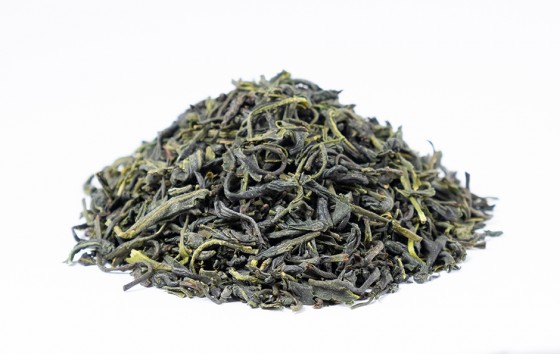 Bio Kabusé Benifuuki
Bio Kabusé Benifuuki
country of origin Japan
Chcete pomoci s objednávkou?
+420 777 052 974
Green tea from Kagoshima, south Japan
Spring leaves from the bushes of the cultivar Benifuuki. It is valued for its high content of antioxidant and antiallergic catechins EGCg and 3MeEGCg (EGCg3). After being plucked, the leaves are stored for some time before being heated with hot steam at higher temperatures (Fukamushi). Thanks to the longer withering, delicate floral notes reminiscent of slightly oxidized "flower" oolongs appear in the aroma.
Matte, green, slightly curly rolled leaves with a sweet, vegetal, slightly spicy aroma. A bright brew with a full, sweet herbal, fruity to citrus flavor with notes of lime, basil and a slight trace of blossoming fruit trees in the background.
Preparation of Benifuuki
These tea leaves are suitable for Asian-style preparation, which includes multiple infusions: you steep 5 grams of tea leaves per 150 ml of water that has boiled and cooled to 85–90 °C for 30 seconds and in the following three infusions, you steep the leaves for 40, 60, and 90 seconds, respectively. Feel free to experiment with steeping time, water temperature, and the amount of tea leaves. You can also read our articles on tea preparation and water quality.
"What is BENIFUUKI?"
It is tea variety Camellia sinensis L. – Cultivar "Benifuuki". It is strong in stature and very disease-resistant. The leaves smell wonderfully. The production – light fermentation and light rolling of the leaves – is somewhat similar to that of Oolong. However, the tea is not just heated, but treated with hot steam. This gives the impression that the tea was pan-fried. Gentle partial fermentation is done in dark places, at low temperatures, and not in light and warm places as is the case of Oolongs. Thus, Benifuuki is virtually not oxidized, preserving its green colour.
Only the final processing, i.e. further drying and milling, is similar to those of Oolongs. Another characteristic is its high content of a special Epigallocatechingallate, EGCG3, attributable to the plant species and intense steam treatment. In Japan, BENIFUUKI is considered a special medicinal tea intended as a therapy for allergies.
Green Tea & Health
As green tea leaves are not oxidized, green tea has the highest content of antioxidants (compared to oxidized teas). It also contains a significant amount of polyphenols such as epicatechin, epicatechin gallate, epigallocatechin, and catechin. The content of polyphenols differs for various tea types. Owing to these substances, tea is very beneficial – preventing cancer, cardiovascular diseases, infections, caries, and many other difficulties.
At present, about 400 various substances are known to be in the tea leaf and they are called active substances. The tea leaf contains mainly: caffeine, polyphenols (tannins), flavanols, flavonoids, theophylline and theobromine (related to caffeine), fats, waxes, saponins, essential oils, carotene, vitamins C, B1, and B2, B5, B10, B12, E, K, enzymes, iron compounds, K, F, Na, Ca, Cu, Ni, Zn, trace elements and many others.
Tannins are anti-inflammatory, soothe the stomach and intestines, and heal the mucous membranes of the respiratory system during colds. Theophylline stimulates blood circulation and relieves muscle spasms. Fluorine prevents dental caries.
Polyphenols (tannins) are present in all teas and are responsible for their slightly bitter astringent taste and characteristic aroma. Once ingested, they are absorbed into various organs. They are excellent antioxidants.
Area: Japan
Harvest: Spring Season
Designation: CZ - BIO - 002
Značka: BIO
Country of origin: Japan



